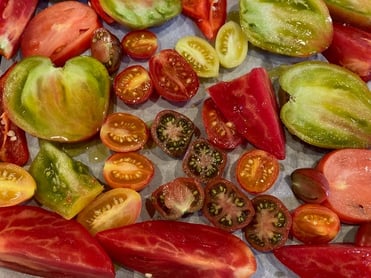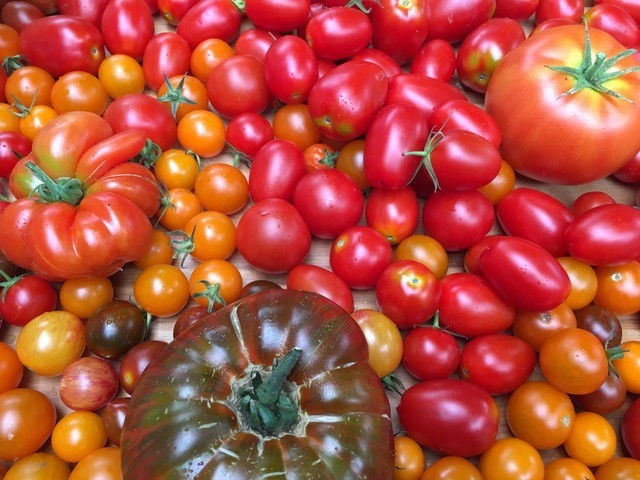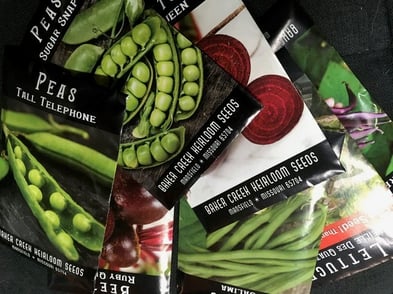Quick Answer:
What are the essential seed terms for greenhouse gardening? Understanding common seed terminology is key when planning your greenhouse garden. Heirloom seeds are stable, open-pollinated varieties that grow true from saved seed, while hybrid (F1) seeds are lab-created crosses offering traits like disease resistance or high yield but cannot be reliably saved. F2–F5 seeds are later generations from hybrids, gradually stabilizing into your own heirlooms. Pelleted seeds are clay-coated for ease of planting, especially by machine, while treated seeds are coated with chemicals to resist rot in cold soil—something many organic growers prefer to avoid. Terms like “new” may refer only to catalogue listings, not to truly new varieties. You’ll also see micro-tomatoes, compact plants ideal for greenhouses, and days to maturity, which are useful for comparing growth speeds across varieties but are not precise. Ultimately, buying seeds in bulk from fewer suppliers or saving your own seed helps manage rising shipping costs while still offering variety and value in your greenhouse garden.
So much to consider
It is December and the seed catalogues are arriving fast and furious. Meanwhile, online suppliers are pounding out dozens of notices to remind us it is time to order seeds soon.
When shopping for plants for your Greenhouse Garden in 2023 would you prefer to pay 26 cents or 1/10th a cent per seed? The price of high-tech pelleted hybrid lettuce seed (like Prismatic mini-head lettuce from Johnny's Select Seed is 26 cents per seed.) If you buy heirloom lettuce like Black Seeded Simpson from Veseys Seeds it will cost 1 cent for 10 seeds.
And that is why it is better to know the various terms mentioned in catalogues before ordering anything. In the always expanding universe of seed suppliers so much is available from very specialized to very common seeds.
And let's face it: the fun of starting your own plants from seed is sexy. You might jump in and damn the cost but today we look at some of the seed terms you will see on labels, catalogues and online. And once you know what it means you can confidently order seed for greenhouse growing this spring.
Seed Terms
 Heirloom Seed
Heirloom Seed
This term just means old, as in an "old variety". These are quite common in the trade. Heirloom also means, or should mean, it will grow true to form. If you buy or collect an heirloom tomato seed then the plant and fruit you grow this season will be the same as the ones you grew last season, even if you save your own seed.
So, are there any drawbacks to Heirlooms?
Many are more disease prone or less vigorous compared to the newer hybrids and some also produce smaller crops.
Hybrid or F1 Seeds
These are tricky to make but can yield some really outstanding results. The complex process involves emasculating (removing the male parts) one flower and then using another "Father" plant with the desired traits to cross with the now emasculated female flower to make a new F1 seed.
The resulting seeds are expensive but should have a special trait like high yield or disease resistance. Buying an F1 hybrid seed does set you up for buying it again and again if you like it because you can't save the seed.
And the crop isn't always good. I remember the one tomato I tried (Hamlet) that was visually beautiful and very productive. The only problem was that the tomatoes tasted terrible. And people told me all about it which is embarrassing. One fellow pulled over in his car to call across the fence and tell me how bad the tomatoes had tasted that I was giving away. And I had paid over $2 per seed to start with.
 F2 - F5 Seeds
F2 - F5 Seeds
Growing and selecting seedlings yourself from an F1 hybrid allows you to gradually stabilize the look and taste of the fruit grown in your garden. If you are on the second, third or fourth generation you are growing F1, F3 or F4 seedlings. By continuously selecting for what you want, the line will usually stabilize over time. If you are hybridizing your own tomato seeds to get a special trait then you will save seeds until all the little seedlings and fruit look the same. In other words, you are gradually producing your own "Heirloom" seeds.
"New"
This means nothing at all. It might mean a catalogue has a specific seed for the first time. It almost never means the seed itself is newly created or newly introduced. For example, the "Manitoba" seed offered in the 2023 Vesseys Catalogue is labelled "New" even though it was introduced in the 1950s as an introduction from the Morden Experimental farm in Manitoba. So, that means it is 60-something years old and definitely not new.
Pelleted
A coating of clay produces seeds of similar size that can easily be handled by both older arthritic hands and younger gardeners' hands. But in fact, pelleted seed was designed for commercial growers to use with automated seeding equipment. Pelleted is easy to use because all the seeds are approximately the same round size so commercial seeders can be set to seed them. If you think Hybrid seed is expensive, wait until you buy pelleted hybrid seed. There is a considerable price uplift on pelleted seeds.
Treated Seeds
These are not a treat. In fact, the term is a euphemism meaning coated with chemicals so they don't rot in cold soil. Warm-season plants like beans or corn will not tolerate cold soil so simply warm up the soil with a clear plastic mulch a week in advance or wait to seed until later in the spring. I was surprised when a supplier surprised be pink "treated" seeds that I started ordering only "Organic certified" seed so I do not accidentally add pesticides to my soil.
Micro-Tomatoes
These are also called mini tomatoes. They are small in every way from the stems, leaves, fruit and overall stature. Expect a mini to be 8-10 inches tall (20-25 cm) and either heirloom or hybrid.

Days to Maturity
A packet or catalogue will list Days to Maturity in their description but of course, your growing location will vary from other gardeners so these dates are not accurate exactly. Instead, consider them comparative. One variety of tomatoes, like Little Birdy cherry tomatoes, shows maturity as 55 days while another variety like San Marzano paste is listed as 78 days. In my experience, it always takes at least 90 days to produce ripe tomatoes fruit in my greenhouse in Canada from a mid-March seeding, but the days listed are a good way to compare and if you feel rushed for time because of your personality or climate, days to maturity are worth considering.
 Ordering Seed
Ordering Seed
The cost of seed might be cheap but shipping fees are forever going up so don't be surprised if you order one seed packet from each of the ten different suppliers and end up spending $100 on shipping alone.
Ordering most of your seed from a single supplier, saving your own seed next year, buying extra seed and using it over a year or two, or shopping locally all help with overhead costs. Many fine suppliers like Renee's Seeds sell their seeds at quality garden centres. Other companies, like Apache Seeds in Edmonton, Alberta gather together a section of seeds from a number of companies and literally do the shopping for you.
Most greenhouse growers do a combination of shopping online for seeds and buying at local stores, but the truth is even local stores usually don't sell local seed. They have ordered it from seed growers from around the world so are usually not local.
Plants versus Seeds
The average lettuce seed packet contains about 250-1,000 seeds. And if you want to try 10 different kinds of lettuce or zucchini, it is definitely easier to buy plants on the day you want to plant them in your greenhouse.
Wanna learn more?
 More from Donna
More from Donna
For more tips from Donna, visit www.donnabalzer.com.
You can also read Donna’s gardening books: No Guff Vegetable Gardening with Steven Biggs and keep track of your success with her Gardener’s Gratitude Journal: Part Diary, Part Personal Growing Guide.



